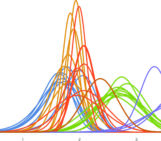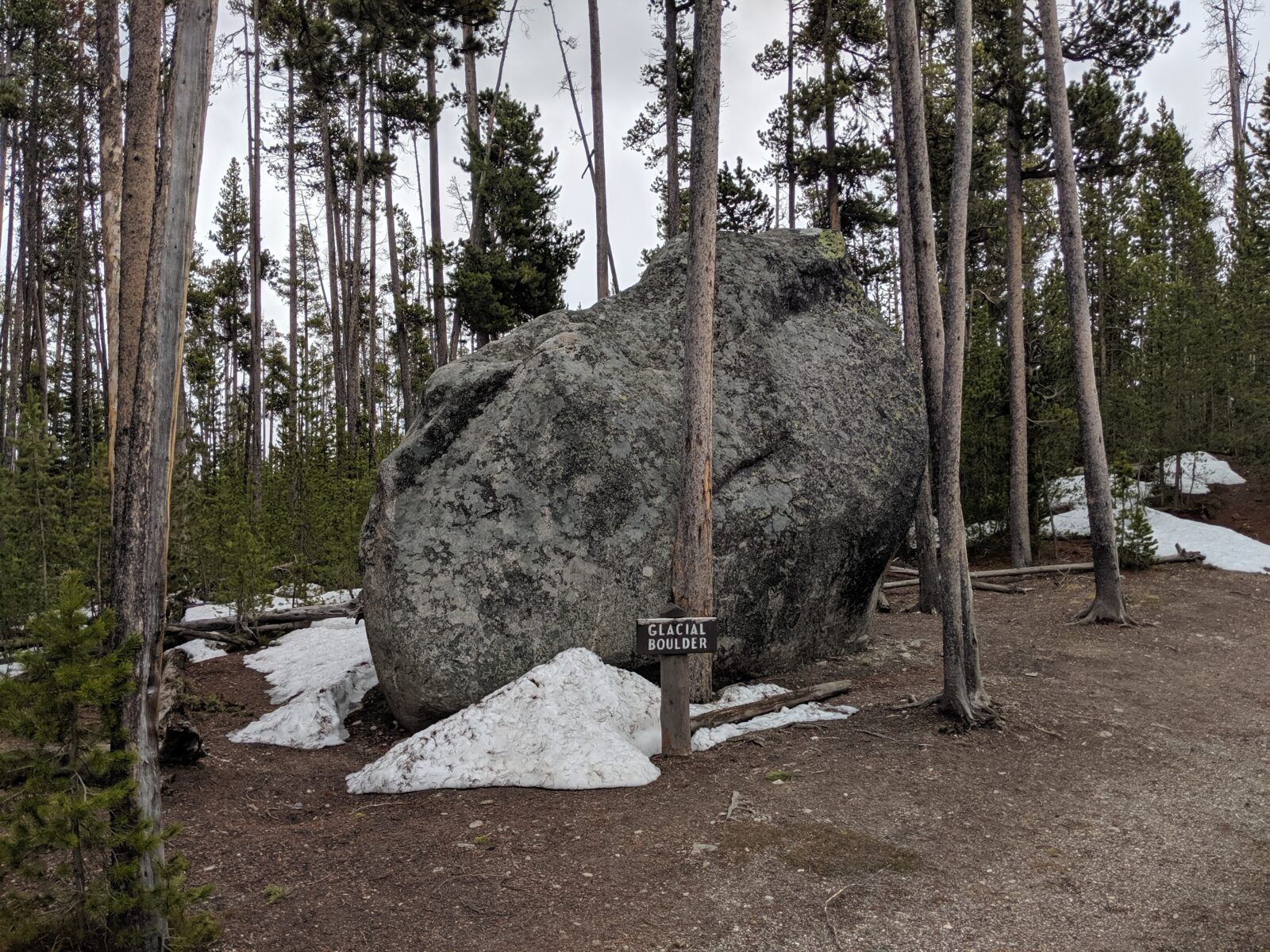
The climate is not what it used to be and it will never be the same again. This is what the models say. Where does this knowledge come from? In short, we learn it from the clues that nature left on the planet since its formation. And it is precisely with these observations where our story begins.
Since the beginnings of mountaineering, many visitors of the Alps and other mountain ranges have wondered why huge boulders (Figure 1) were left at the outlets of glacial valleys. For some time, scientists thought that they were left by the biblical flood. However, Jean-Pierre Perraudin (among others), a carpenter from the Canton of Valais (Switzerland) proposed that these huge rocks could have been originated by the movement of glaciers. Glaciers that in the past occupied the mouths of these valleys and were therefore dozens of times larger than in Perraudin’s time (Figure 2). This idea got the attention of a hydraulic engineer, Ignace Venetz, who brought it to the ears of some of the most prominent scientists at the time as Jean de Charpentier (Swiss geologist and glacier pioneer) and later to Louis Agassiz (naturalist, better known for his studies of glaciation). This was just the starting point to solve the question: what does a glacial cycle need to be a glacial cycle?
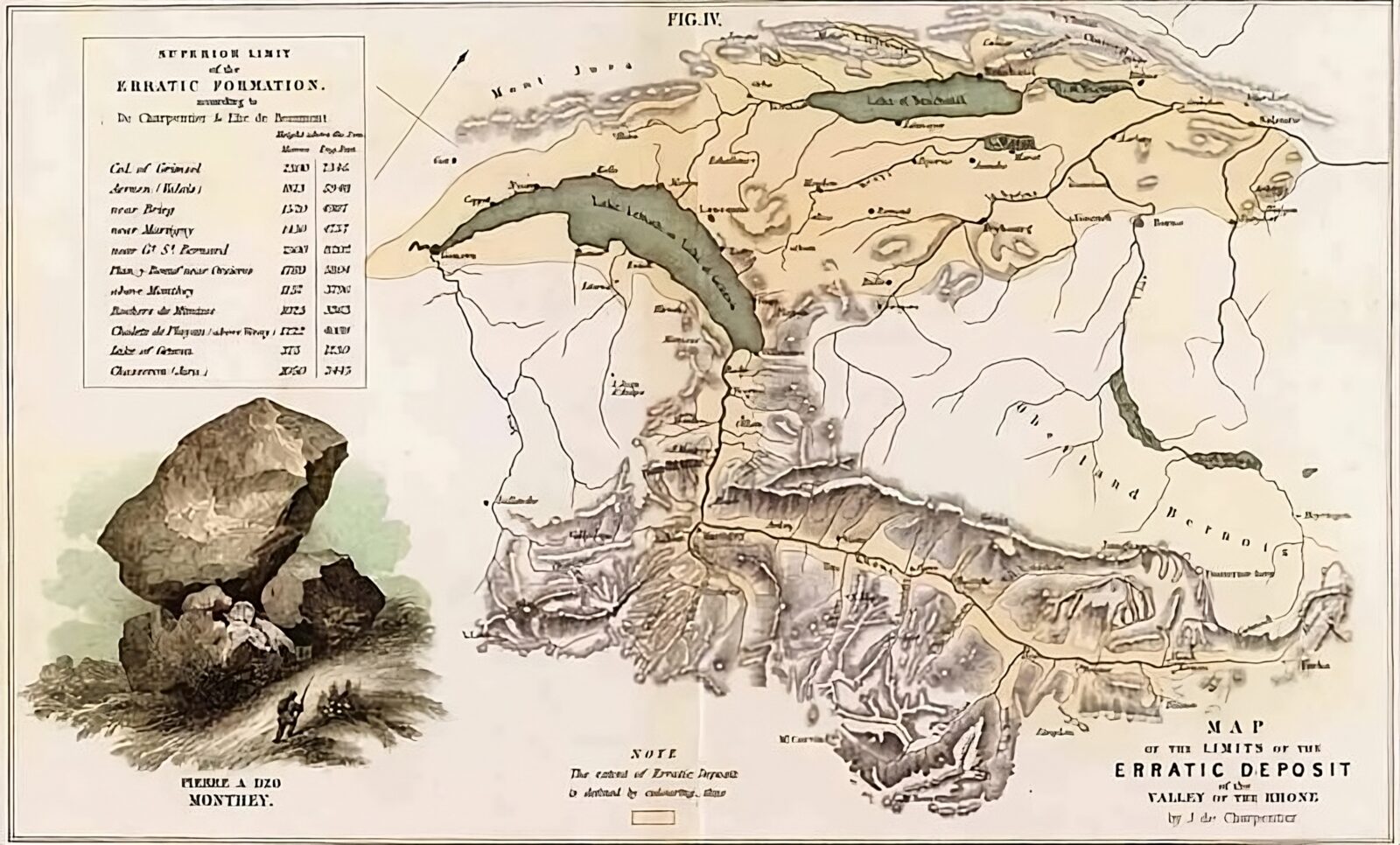
Figure 2. Map of the erratic boulders that Jean Charpentier studied in the valley of the Rhône, from Charpentier (1841, Essai sur les glaciers et sur le terrain erratique du bassin du Rhône). The image quality was enhanced using AI just for visualization purposes.
Numerous hypotheses were debated within the scientific community, but it was not until the early 20th century that the Serbian astronomer and father of the paleoclimate modeling Milutin Milankovitch (based on the ideas of the Irish scientist Joseph John Murphy) calculated the variations of the energy that reaches our atmosphere due to the small variations of the Earth’s orbit, laying the foundation for what now we call the Milankovitch the Astronomical Theory of Glacial Cycles. This theory postulates that these long-term changes in climate are driven by changes in this amount of energy (Figure 3a), leading to cooler (bigger glaciers) and warmer (smaller glaciers) periods. Then, it was accepted that these Glacial Cycles took place every 20 to 40 thousand years, the scale of the changes of incoming solar energy.
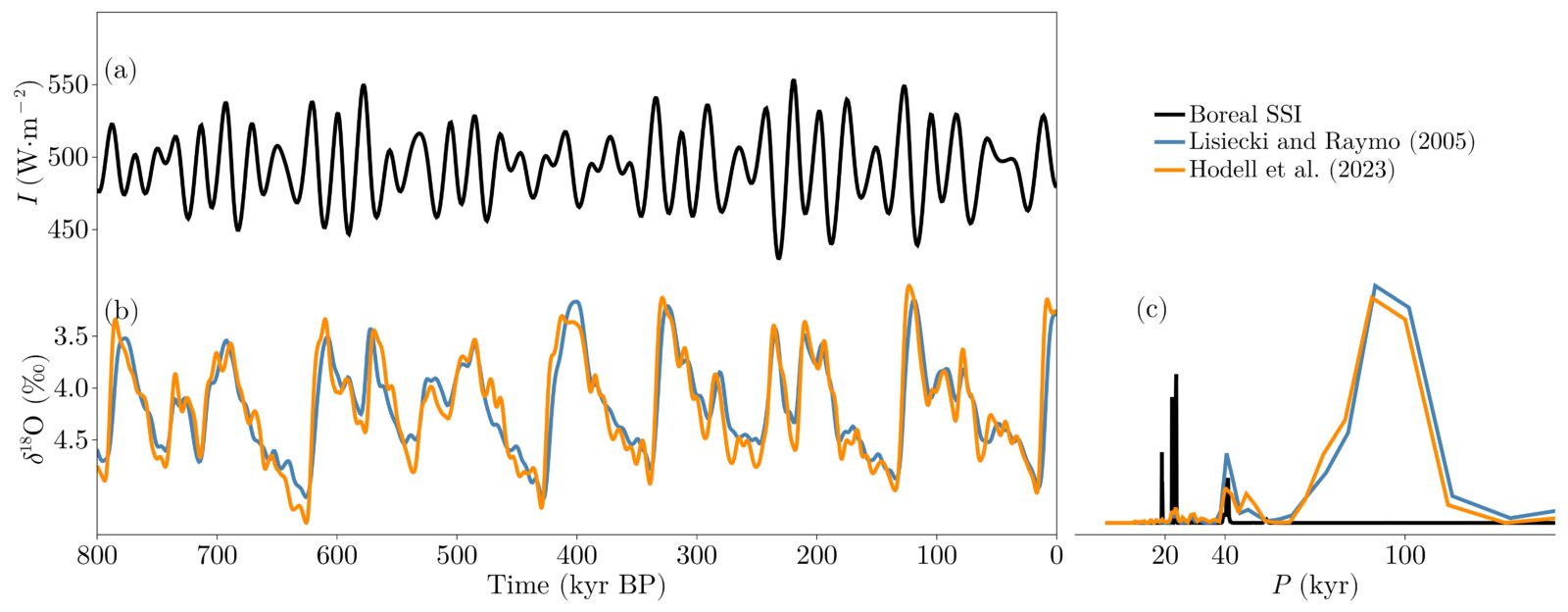
Figure 3. (a) Variations of incoming solar energy at 65ºN (Boreal SSI) during the last 800 thousand years, (b) time series of the oxygen isotope 18 (δ18O) and (c) predominant periodicities of (a) and (b). From Pérez-Montero et al. (2024). Note that the important message of this figure is that the supposed trigger, the solar energy, oscillates fast, but the climate responds slowly. This can be seen clearly in panel (c), the black peaks indicate that the incoming solar energy changes mainly at 20 and 40 thousand years, but the orange and blue lines have their bigger peaks in 100 thousand years.
However, a few years later, other scientists (Gustaf Arrhenius, Nicholas Shackelton and Cesare Emiliani among others) found signals of past climate changes hidden in deep ocean fossils. This signal consists of variations in the ratio of certain isotopes (which are atoms of the same element with different weights), in this case the heavy oxygen isotope 18 (10 neutrons and 8 protons per atom) relative to the lighter oxygen isotope 16 (8 neutrons and 8 protons per atom). This ratio is named δ18O (Figure 3b) and it represents how much oxygen 16 is transported to polar regions during cold epochs (Figure 4). δ18O thus gives us a measure (in paleoclimate we call this proxies) of past sea level rise and global temperatures. By analyzing the δ18O signal, scientists found that the actual climate changes in the past were not every 20 to 40 thousand years but of about 100 thousand years (Figure 3c)! In addition, they discovered that these changes were highly asymmetric, with a pronounced sawtooth shape (Figure 3b), thus indicating slow glaciations (higher δ18O values) and incredibly fast deglaciations (lower δ18O values). The scientific community had no choice but to come up with new hypotheses to reconcile the Sun’s influence and its relationship with the planet’s climate.
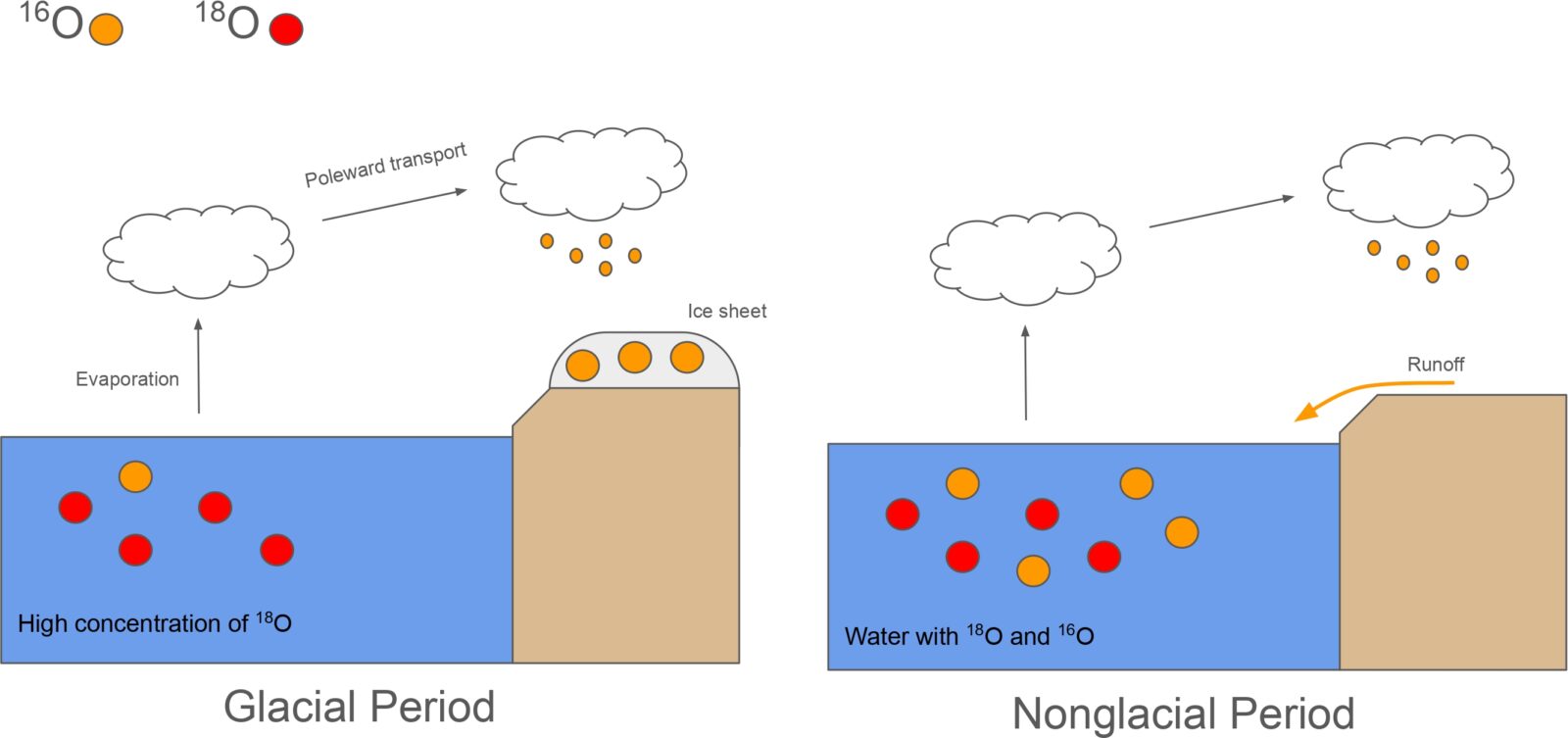
Figure 4. Schematic representation of the distribution of oxygen isotopes 16 (16O) and 18 (18O) during glacial-interglacial periods. During glacial periods, precipitation (rich in 16O) accumulates in the ice sheets, resulting in oceans abundant in 18O. However, during non-glacial periods, runoff rapidly returns 16O atoms to the ocean.
What does a glacial cycle need to be a glacial cycle? From what we have just seen, it seems that a glacial cycle needs: a fast driver (the orbit around the Sun changes mainly every 20 to 40 thousand years) and a slow enhancer in the climate (something in the Climate System that evolves or synchronizes with the forcing in about 100 thousand years). Therefore, some component of the Earth could be responsible for such a slow evolution, but what? The atmosphere varies rapidly, but its changes disappear in minutes, hours or days at most (Figure 5). Did plate tectonics play a role? Unlikely, the lithosphere evolves too slowly, the movements of the solid Earth have promoted changes in climate but of greater duration because their movements and effects are manifested in dozens to hundreds of millions of years. Then it should be the ocean! The ocean is able to affect the climate for longer than the atmosphere, as it has “inertia” and huge currents that transport heat around the planet and greenhouse gases to the deep ocean. And what about the ice? (Figure 5) Ice sheets (huge glacier systems as Greenland and Antarctica), for example, modify atmospheric and oceanic currents because of their great size and water storage, and can reflect many of the incoming solar radiation.
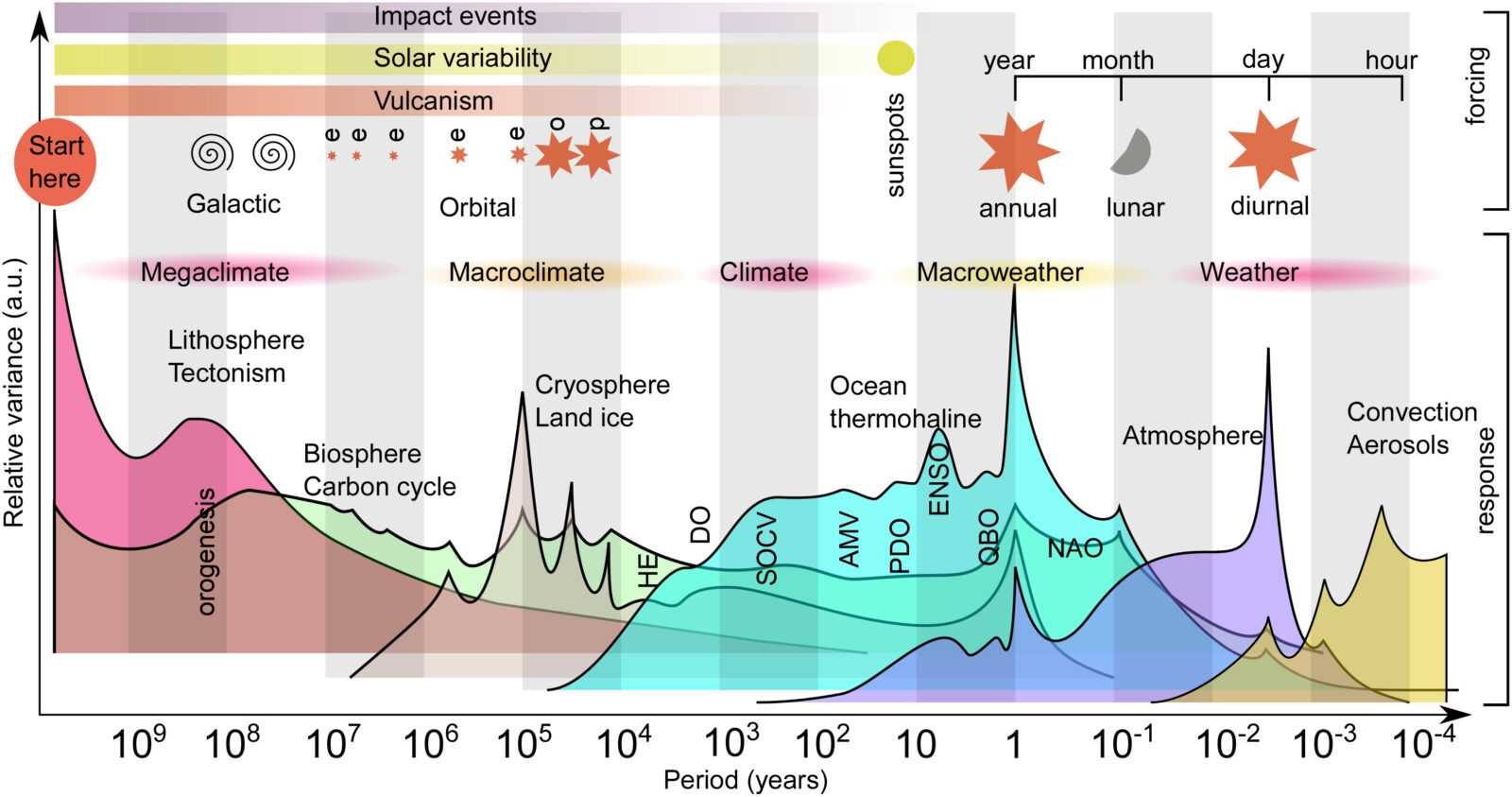
Figure 5. Relative importance of each component of the Climate System as a function of the periodicity in climate. From von der Heydt et al. (2020). This figure should be interpreted as a visual representation of how relevant is each part of the Earth in producing climate changes of a certain time duration.
All these climate subsystems have an enormous influence on climate, but how can we separate the cause from their consequences? How can we distinguish whether the ice sheets helped to drive the glacial cycles or whether they simply evolved according to a process related to a warming/cooling of the atmosphere/ocean? And that is exactly where the problem lies. Nowadays, scientists still develop models (equations that represent the behaviour of nature) to simulate these components of the Earth System, and try to elucidate what are the necessary ingredients to produce oscillations such as the glacial-interglacial cycles. Among all the ideas, the main mechanisms are related to the ice sheets and the Southern Ocean (Ganopolski, 2024). On one hand, ice sheets grow slowly enough to cool the climate in a progressive way, and even so, being highly affected by particular processes that accelerate their collapse during interglacials. Dust darkens the ice allowing for enhanced absorption of solar energy, rapidly increasing the melting. Geography also plays an important role in the fast disappearance of the ice sheets. Certain locations can induce quick elimination of outlet glaciers in contact with the ocean. Ice sheets themselves cool the atmosphere, reducing precipitation and their own growth, thus being easily melted if the energy that reaches the atmosphere increases. On the other hand, the Southern Ocean can store high amounts of carbon dioxide in its depths during glacial phases. Its release depends on the extent of Antarctica. Thus if Antarctica reaches a maximum geographical extent, it can be liberated suddenly creating an enhanced greenhouse effect that allows for fast glacial terminations.
In conclusion, the discovery of glaciations gave us a perspective on how different the world we live in has changed in the past. Decades of research on glacial cycles have allowed us to better understand how the Earth System works and what could happen to the planet and, above all, to living species if we change the conditions of the planet too much.
Note: To anyone interested in knowing more details about this topic I find really interesting and instructive the books of Imbrie and Imbrie (1986) and Ruddiman (2001), and the reviews of Paillard (2001; 2015) and Berends et al. (2021).
This post has been edited by the editorial board.
References [1] Berends, C. J., Köhler, P., Lourens, L. J., & Van de Wal, R. S. W. (2021). On the cause of the Mid‐Pleistocene transition. https://doi.org/10.1029/2020RG000727 [2] Ganopolski, A. (2024). Toward generalized Milankovitch theory (GMT). Climate of the Past, 20(1), 151-185. https://doi.org/10.5194/cp-20-151-2024 [3] Imbrie, J., & Imbrie, K. P. (1986). Ice ages: solving the mystery. Harvard University Press. [4] Paillard, D. (2001). Glacial cycles: toward a new paradigm. Reviews of Geophysics, 39(3), 325-346. https://doi.org/10.1029/2000RG000091 [5] Paillard, D. (2015). Quaternary glaciations: from observations to theories. Quaternary Science Reviews, 107, 11-24. https://doi.org/10.1016/j.quascirev.2014.10.002 [6] Pérez-Montero, S., Alvarez-Solas, J., Swierczek-Jereczek, J., Moreno-Parada, D., Montoya, M., & Robinson, A. (2024). A simple physical model for glacial cycles. EGUsphere, 2024, 1-29. https://egusphere.copernicus.org/preprints/2024/egusphere-2024-1842/ [7] Ruddiman, W. F. (2001). Earth's Climate: past and future. Macmillan. [8] von der Heydt, A. S., Ashwin, P., Camp, C. D., Crucifix, M., Dijkstra, H. A., Ditlevsen, P., & Lenton, T. M. (2021). Quantification and interpretation of the climate variability record. Global and Planetary Change, 197, 103399. https://doi.org/10.1016/j.gloplacha.2020.103399



